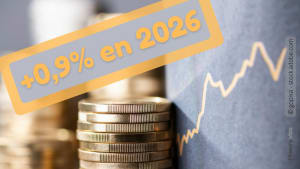Max1 a dit:
Est-ce que hedger un ETF a un coût ?
En bleu, l'ETF sp500 hedgé de BNP en euros (ESEH) et en rouge le sp500.
Les courbes se superposent très bien et ne dévient pas sur la durée.
Si coûts il y a, ils doivent être absolument négligeables.
Afficher la pièce jointe 15565
Votre conclusion est fausse car vous comparez un indice (par définition : aucun coût et réplication parfaite)
dividendes non réinvestis vs un ETF (coûts + réplication imparfaite)
dividendes réinvestis... Pour une comparaison juste vous pouvez par exemple prendre chez BNP les ETF ESDD (S&P 500 NTR, en réalité GTR, en USD) & ESEH (S&P 500 couvert en EUR) :
Il y a plusieurs raisons qui expliquent pourquoi ESEH ne suit pas parfaitement ESDD :
1) A difference in interest rates between the base currency and the hedged share class currency: this deviation may be positive or negative, depending on prevailing rates.
2) Performance dilution from unrealised profit and loss: the fact that all unrealised profit/loss on the currency forward remains uninvested until the hedge is rolled over can have the effect of the hedged share class being temporarily overor underinvested in the base investment portfolio
3) Transaction costs: these will detract slightly from the overall return
4) Intra-day volatility of the value of the base currency assets in relation to the existing hedge as market value hedge adjustments can only be placed after the fund’s valuation point
5) Although we typically look to hedge 100% of the daily cash flows and the NAV, the hedge may not always be at 100% to avoid transaction costs for minor adjustments
Dans des conditions normales de marché les écarts induits par 2) 3) 4) 5) sont très faibles. Par contre l'effet dû à 1) est actuellement loin d'être négligeable, il est de l'ordre de -2,4%/an (SOFR-€STER) ! Ce "coût" est
variable dans le temps, peut être
positif OU
négatif et
n'est pas reflété dans les frais courants du fonds.
Explication :
As interest rates are currently much higher in the US than in most of developed Europe, there is increased demand for USD assets hedged back to developed European currencies. Banks will price FX forwards according to supply and demand as well as their cost to hold or hedge currency exposure. When providing a USD to EUR hedge, a bank goes long the EUR (because it will need to deliver EUR at the maturity of the forward contract), thus earning EUR interest rates. Also the bank shorts USD, thus having to pay the higher USD interest rates. The bank will price this interest rate differential into the price of the FX forward.
Sources :
[lien réservé abonné]
[lien réservé abonné]









